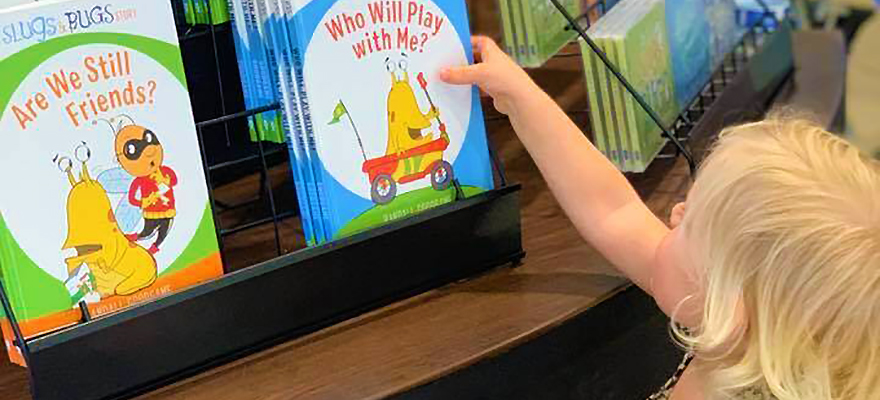Our family has long enjoyed Randall Goodgame’s Slugs & Bugs albums, and even though my older kids have outgrown asking for them, you might still overhear my 14-year old singing “Tractor Tractor” on occasion. What makes those albums so appealing is Goodgame’s ability to draw kids in with his just-right balance of silliness and sincerity, laughter and lesson.
Goodgame’s heart for children shines through whenever he talks about Slugs & Bugs. On a recent episode of The Habit Podcast with Jonathan Rogers, Goodgame spoke about writing for children, saying, “Children just want to know the truth. . .whether you are being silly or being serious, they just want you to be simple and be sincere.”
Simplicity and sincerity is just what you’ll find in Goodgame’s two new picture books, Who Will Play With Me? and Are We Still Friends? illustrated by Cory Jones. The books embody simple, Biblical truths that apply to kids’ every-day relationships with gentle humor and heart-tug moments.
In Who Will Play With Me? Doug the Slug finds a wagon and wants a ride. But when there’s no one to give him one, he decides to offer a ride instead. Doug, and later Sparky the lightning bug, learn that being a friend means treating others the way you want to be treated.
In Are We Still Friends? Doug accidentally eats all of Sparky’s chips. And, because one wrong often leads to another, he lies about it. When he finally confesses, he wonders if Sparky will still be his friend. They learn about the power of forgiveness and telling the truth.
A story that meets children where they are, with honesty and humor, is truly a gift.
CAROLYN LEILOGLOU
Now, just because I can tell you the moral of each story, it doesn’t mean that Goodgame has spoon-fed these lessons to the reader. On the contrary, Goodgame’s respect for his child-reader is obvious, no where more clearly than in his omission of a “moral” at the end of his stories. It takes trust in your reader not to explain the moral but rather let the story work upon their heart. Especially when your audience is children.
What is a story’s work? Children’s author Sally Lloyd Jones says it this way in her article “What Stories Do:”
The power of the story isn’t in summing it up, drilling it down, or reducing it to an abstract idea. The power of the story isn’t in the lesson. The power of the story is the story.
While Goodgame includes a scripture verse—which makes a great mediation alongside of the story—on the final page of each book, he allows his readers to discern the lesson on their own, in the way they are ready for, and, as such, his readers are more free to connect the story to their own lives.
The cartoon-style illustrations—reminiscent of Veggie Tales—rhyming text, and simple storylines suit these books best for younger children, ages 3-6.
Jesus’ command in Matthew 19 to let the children come to him reminds us that writing for children isn’t lesser or secondary work; it is valuable kingdom work. And a story that meets children where they are, with honesty and humor, is truly a gift.
Click here to view Who Will Play With Me? in the Rabbit Room Store, and here for Are We Still Friends?
- Midsummer’s Mayhem: Shakespeare, Baking, Magic - April 17, 2024
- Review: God Speaks to Me - February 28, 2024
- Review: Watership Down, the Graphic Novel - October 30, 2023

Leave a Reply